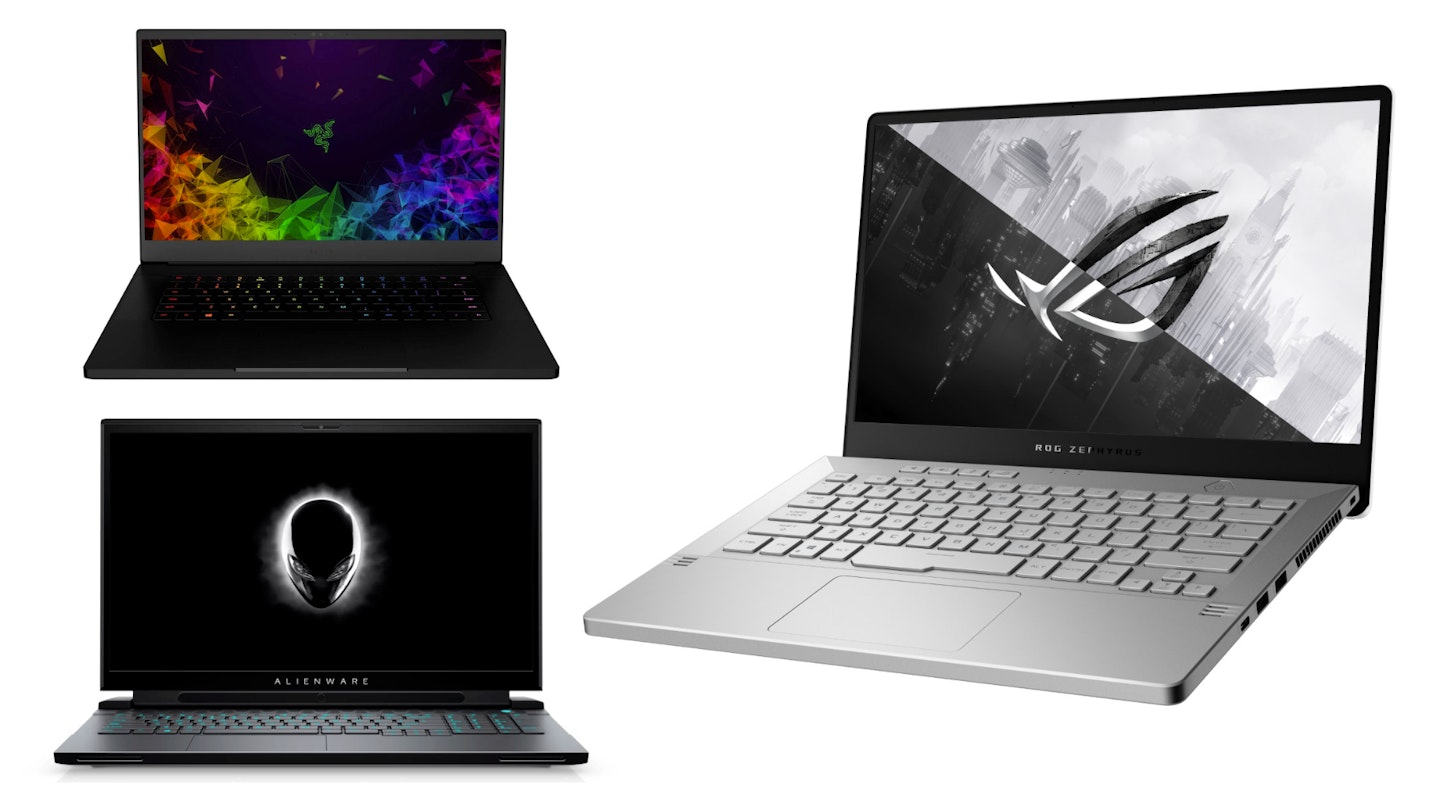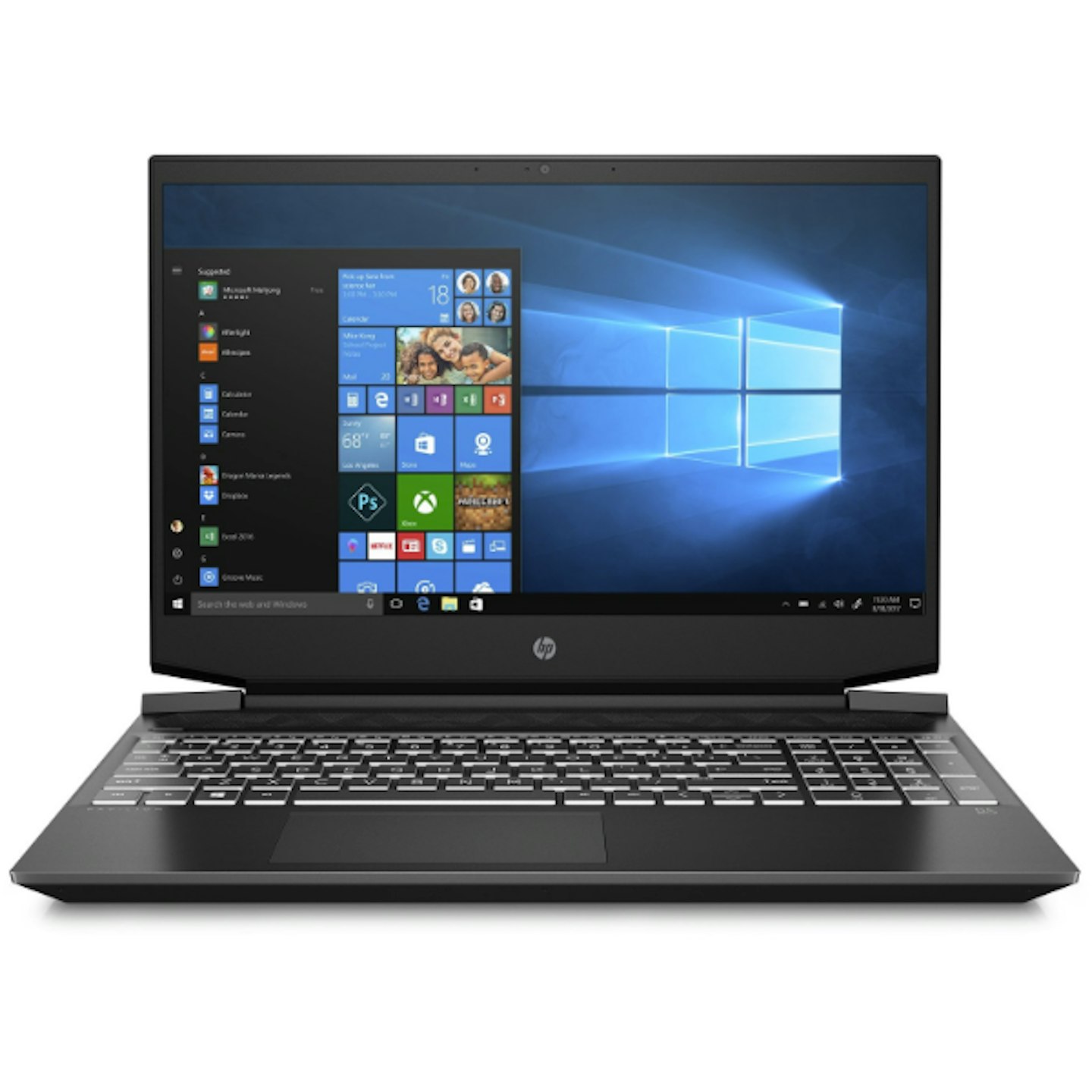Gaming laptops are the ideal portable solution for PC gamers on the move. As powerful gaming tech has gotten smaller and more power-efficient in recent years, laptop manufacturers can cram in mighty CPUs, GPUs and SSDs to deliver portable gaming experiences akin to those found on their tall and looming desktop cousins.
But the best gaming laptops aren’t just useful for playing Civilisation VI on the train or sneaking to the shed for a few rounds of Warzone. They are also a viable substitute to mid-range gaming PCs for anyone without the space to set a gaming desk up in their room, flat or house. It’s also true that they are an enticing option for anyone needing an easy and affordable alternative to custom PC builds.
The appeal of a gaming laptop isn’t restricted to just gaming. Though, as the name suggests, they are designed for getting the most out of video games, the processing and graphical muscle that the components hold are perfect for image and video rendering programs.
So, whether you’re a newcomer looking for easy access to the best PC games or an established player hunting for a laptop that will let you get your gaming fix whenever and wherever you please, read on for our rundown of the best gaming laptops.
What we look for in the best gaming laptops:
CPU
A central processing unit, or CPU, is the brain of a PC - it processes and executes instructions. CPUs consist of multiple cores, and the higher the number of these cores, the more processes it can carry out, improving performance. Clock speed is a measure of the number of cycles that a CPU executes per second. The count is reported in Gigahertz (GHz), and the more, the better.
For gaming, a CPU should have four or more cores and a clock speed of over 3.5GHz.
GPU
Graphics processing cards, often called GPUs or graphics cards, render CPU data into visual output. They can allocate more resources to the processing and rendering of visual information. To render high-quality graphics quickly, GPUs have their own dedicated RAM. As well as gaming applications, GPUs are essential for video and image editing. GPUs will allow games to perform at higher resolution and frame rates with improved stability.
Many CPUs have graphic cores devoted to performing the same task as dedicated GPUs. While useful for budget custom PC builds, CPU graphic cores are no match for graphics cards.
RAM
Random-access memory, or RAM, temporarily holds bytes of information for quick and random access by the CPU. The information will be related to programs and services that are in use. The more RAM that’s available, the more quick-access information there is available to the CPU, thereby improving computer performance.
Gamers will want no less than 8GB of RAM, but 16GB is preferable.
If RAM is described as being ‘onboard’, this means that the RAM module has been soldered directly to the motherboard. Onboard RAM cannot be upgraded in normal circumstances.
SSD
A solid-state drive, or SSD, is a storage device used in PCs. The technology uses flash memory to store data, and is well-known and highly regarded for its quick read/write times. SSDs vastly improve launch and in-game loading times. 512GB is a very common volume of SSD storage provided with gaming laptops.
NVMe SSDs are a relatively new development in SSD technology. They provide vast improvements to performance speeds and occupy less physical space. This is the form factor most likely found in the best gaming laptops. It’s also the technology found in the PS5 and Xbox Series X|S.
SSD technology has largely replaced traditional disc-based hard drives (HDD). However, some gaming laptops and PCs will include both SSD and HDD storage. The SSD is typically reserved for loading applications and the OS, while the HDD volume is used for mass storage.
Display
Gaming laptop displays carry much of the same specifications as full-sized gaming monitors. Refresh rates, panel type and resolutions should all be considered when upgrading.
It’s also worth noting what interfaces the laptop carries - HDMI and DisplayPorts outputs are going to allow you to extend a gaming laptop's credential out onto an external gaming monitor for added screen real estate while at a desk.
You can read more about what to look for in the gaming screen in our rundown of the best gaming monitors.
Audio
It brings us no joy to say this, but laptop speakers are only ever going to be ‘fine’ at best. A gaming headset is the obvious choice in terms of price and portability, but a decent set of external gaming speakers, like the Razer Leviathan or Logitech G560, will also deliver a far more enjoyable and immersive experience.
Interfaces
The amount and type of interfaces a gaming laptop has determines its flexibility. USB 3.0 connections are ideal for connecting essential peripherals, like keyboards and mice, whereas USB-C ports allow fast-transfer tech, like 1080p/60fps webcams, to work their magic. HDMI and DisplayPorts allow for video outputs to gaming monitors, gaming TVs and projectors. 3.5mm audio in/out ports are key too, as they allow gaming headsets with microphones to work from the one socket.
Cooling
Cooling is always a top priority with PC gaming. It gets a little tricky with gaming laptops, as the diminutive size doesn’t allow for dual-fan towers or liquid-cooling pumps that can be relied on in desktop gaming PCs.
Gaming laptops use a combination of fans, heat-conducting metals, vents and case materials to ensure that heat dissipates as efficiently as possible. Clever power-diversion and power-limiting features are also common, optimising the power passing through a system to ensure no waste and avoid unnecessary heating.
Just so you know, while we may receive a commission or other compensation from the links on this page, we never allow this to influence product selections.
The best gaming laptops:
Acer Nitro AN515-44
Razer Blade 15
HP Pavilion 15-ec1001na
Alienware m17 R4
HP Pavilion 17-cd1014na
ASUS ROG Zephyrus G14 GA401IU
Acer Nitro AN515-44
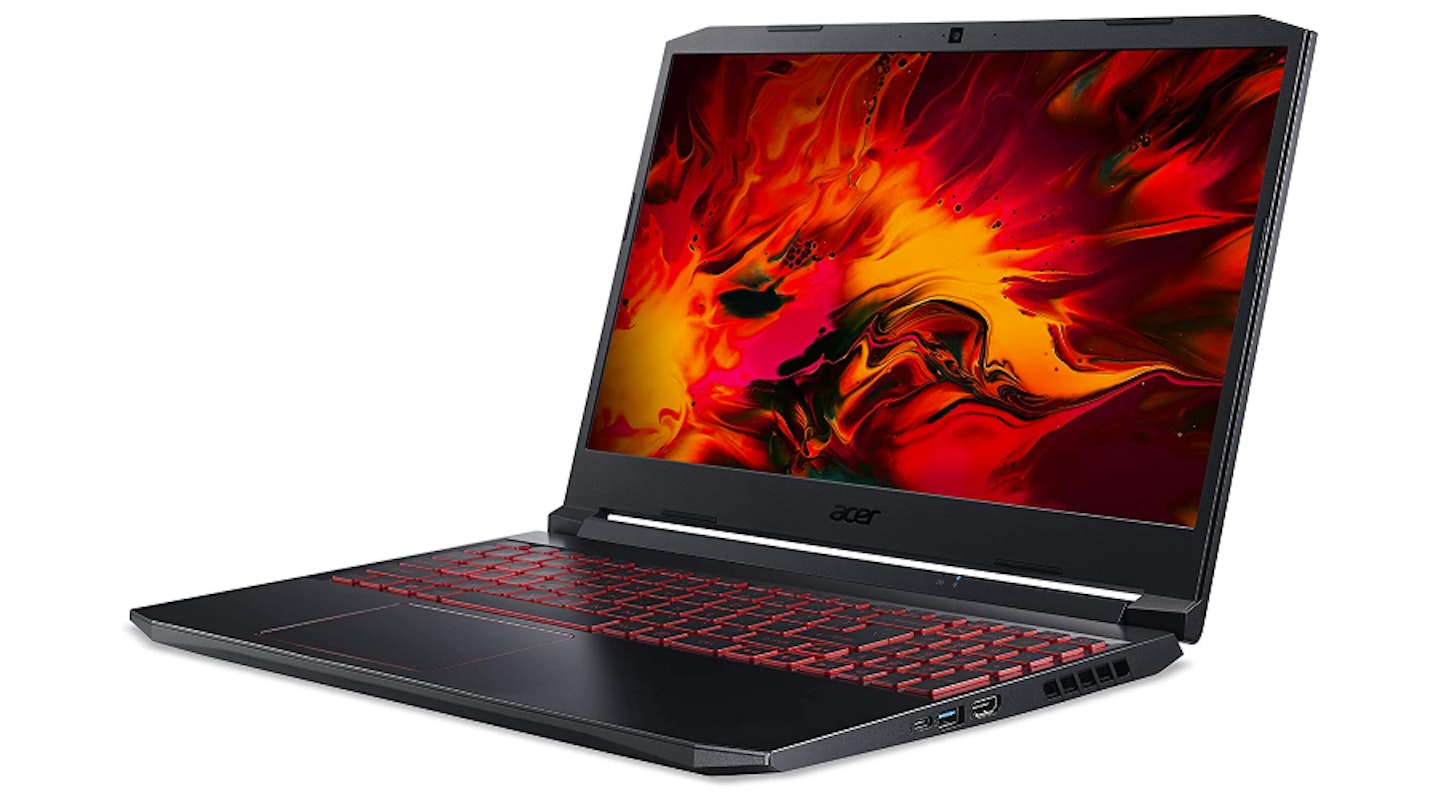
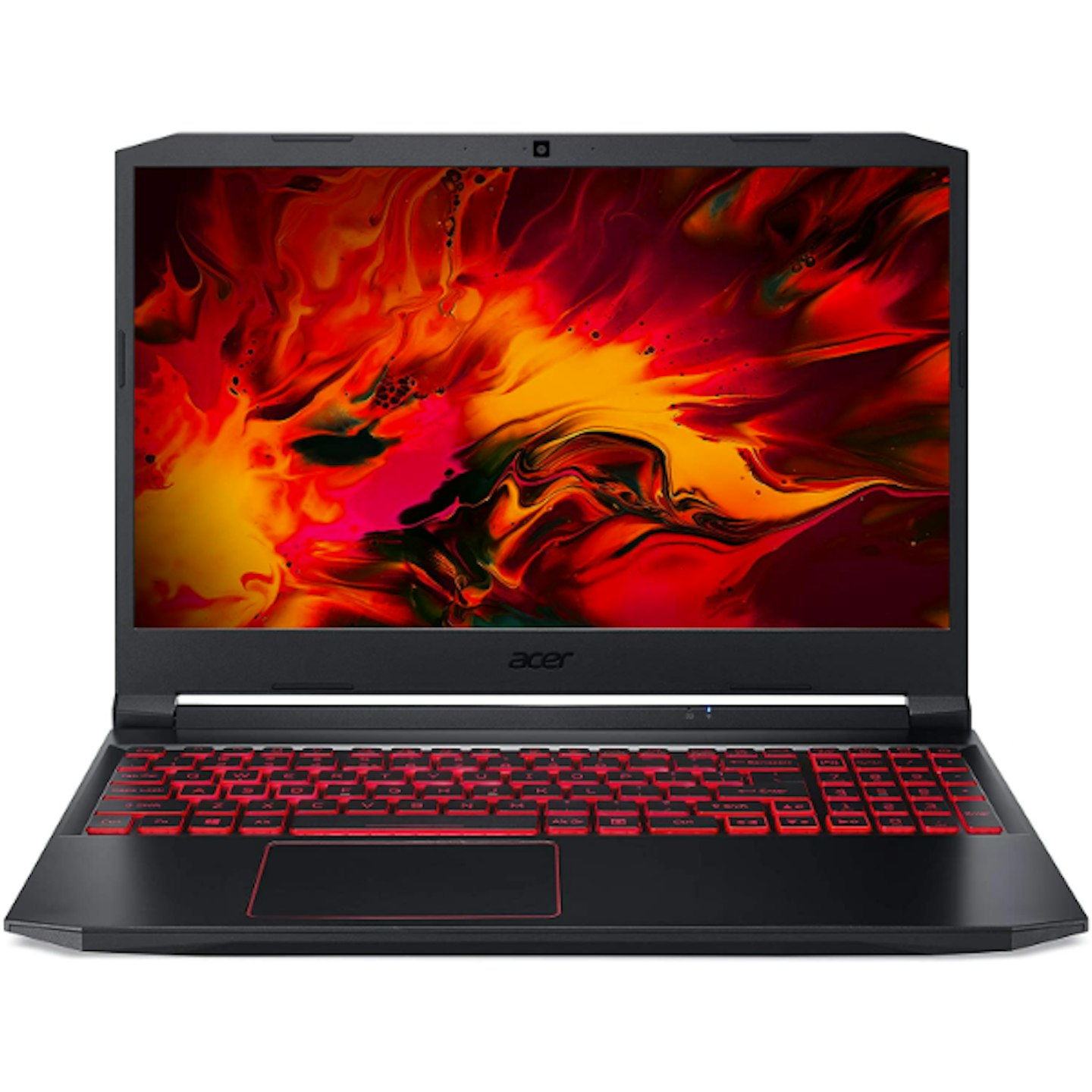
www.jdwilliams.co.uk
Squeezing in just under four-figures is the Nitro 5 AN515-44 from Acer. This is a tidy offering from the brand, carrying the AMD Ryzen 7 4800H (2.9GHz/4.2GHz), the same CPU as the much more expensive ASUS ROG G14. The NVIDIA GTX 1650Ti GPU is a safe mid-range choice that’s going to perform for the 1080p/144Hz display. The 512GB SSD is standard, and the overall design of the laptop is very pleasing.
The 8GB RAM is a little disappointing, however. While this will get newcomers up and gaming, it won’t be long before it starts to feel like a bottleneck in need of a swift upgrade.
Pros: Solid CPU, quality display
Cons: RAM upgrade needed
Specifications:
CPU: AMD Ryzen 7 4800H 8 Core CPU (2.9GHz/4.2GHz)
RAM: 8GB DDR4 (4GB x2)
GPU: NVIDIA® GeForce GTX 1650 Ti (4GB GDDR6)
SSD: 512GB SSD M.2 NVMe PCIe 3.0 x4
Display: 15.6-inch Full HD IPS 144Hz
Connections: USB 3.2 x3, USB-Cx1, USB 3.2 Type-A x1, WiFi, Bluetooth 5.0, enternet
Video output: HDMI 2.0
Audio: Stereo speakers, 3.5mm audio in/out
Battery: Up to 9 hours
OS: Windows 10 Home
Weight: 2.3kg
Razer Blade 15
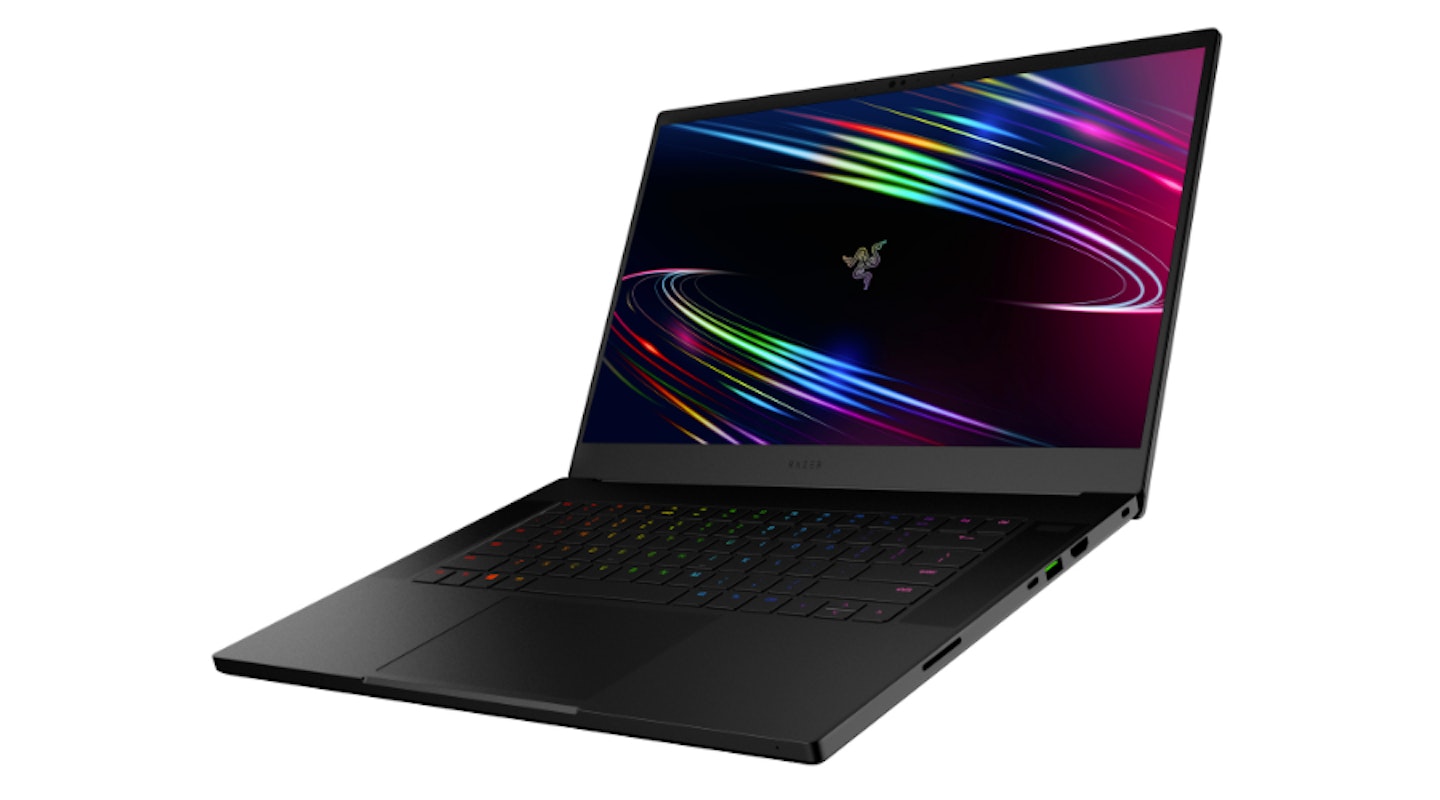

www.razer.com
The Razer Blade 15 is a powerful, portable and impressive laptop. The Intel i7-10750H 6 Core CPU has plenty of number-crunching grunt to it, clocking in at 2.6GHz/5.0Ghz. Likewise, the 16GB DDR4 RAM has a zippy performance as a base installation, and with support for up to 64GB, there’s plenty of room for upgrades. The Blade 15 supports M.2 NVMe PCIe 3.0 x4 SSDs and comes with 512GB installed.
The 1080p/144Hz 15.6-inch screen ensures that the excellent RTX 3060 Laptop GPU has a chance to pump out some incredibly smooth gameplay (even with ray tracing enabled).
Pros: Powerful CPU and GPU in a highly portable package
Cons: Longer battery would be a plus
Specifications:
CPU: 10th Gen Intel® Core™ i7-10750H 6 Core (2.6GHz/5.0GHz)
RAM: 16GB dual-channel DDR4-2933MHz (8GB x 2, expandable up to 64GB)
GPU: NVIDIA® GeForce RTX™ 3060 Laptop GPU (6GB GDDR6, VR ready, up to 1530MHz)
SSD: 512GB SSD M.2 NVMe PCIe 3.0 x4 (Expandable up to 4TB)
Display: 15.6-inch Full HD 144Hz, 100% sRGB
Connections: USB-C x1, USB 3.2 x3, USB-C 3.2 x1, WiFi, Bluetooth 5.1, enternet
Video output: HDMI 2.1
Audio: Stereo speakers, 3.5mm audio in/out, THX Spatial Audio, 7.1 Codec support via HDMI
Battery: Up to 6 hours
OS: Windows 10 Home
RGB: Razer Chroma
Weight: 2.09kg
Other: Razer™ Synapse 3 enabled, built-in 1MP/720p webcam
HP Pavilion 15-ec1001na

The HP Pavilion 15-ec1001na is our choice for the best affordable gaming laptop. It uses the AMD Ryzen 5 4600H CPU (3.0Ghz/4.0GHz) and 8GB DDR4 RAM to deliver a stable gaming foundation. Graphics are taken care of by the GTX 1650 GPU, which will give a solid mid-range performance across modest - and occasionally high - graphic settings. The 15-ec1001na comes with a 256GB NVMe SSD, which is fine for a start, but a future upgrade will help handle a growing gaming library.
Pros: Affordable access to mid-range portable gaming
Cons: Modest performance not up to the heavy lifting required by more recent releases
Specifications:
CPU: AMD Ryzen 5 4600H 6 Core (3.0GHz/4.0GHz)
RAM: 8GB dual-channel DDR4-3200MHz (4GB x 2)
GPU: NVIDIA® GeForce GTX 1650 (4GB GDDR6)
SSD: 256GB SSD M.2 NVMe PCIe 3.0 x4
Display: 15.6-inch Full HD IPS, 45% NTSC
Connections: USB-C x1, USB 3.0 x1, USB 2.0 x1, WiFi, Bluetooth 5.0, enternet
Video output: HDMI 2.0
Audio: Stereo speakers, B&O Audio, 3.5mm audio in/out,
Battery: Up to 8 hours (or 11 hours during video playback)
OS: Windows 10 Home
Weight: 1.98kg
Other: Full-size, ghost white backlit keyboard with numeric keypad, built-in True Vision 720p webcam
Alienware m17
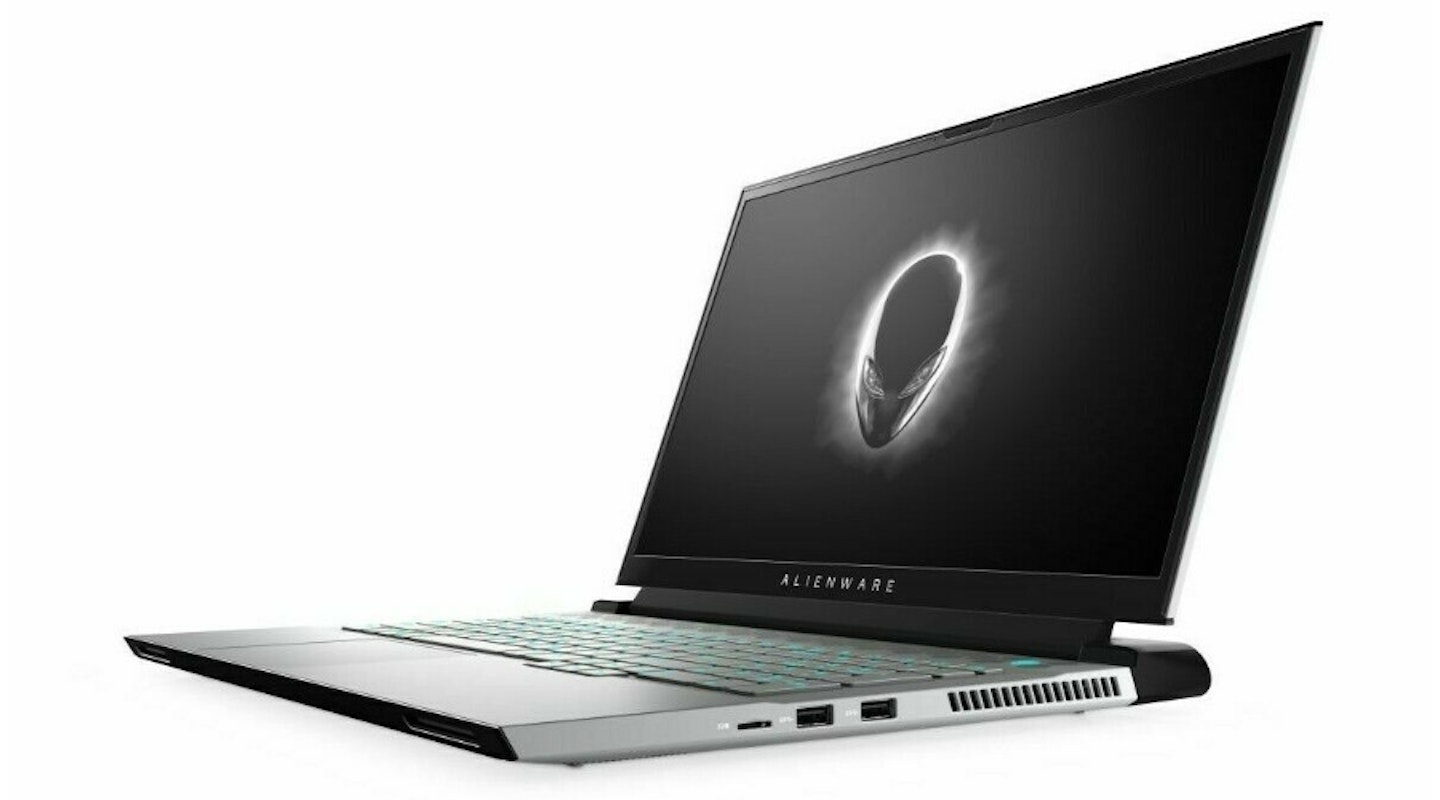

www.laptopsdirect.co.uk
At well over £2,000, the Alienware m17isn’t for casual gamers. However, for those with the cash and the passion, it's got plenty to offer. The power of the 8-Core Intel i7-10870H (2.2GHz/5.0GHz), 16GB RAM DDR4 and GeForce RTX 3070 speak for themselves. They make this laptop capable of pulling some serious performance on taxing games. The large 17.3-inch screen is here to impress, with a 7ms response time, 144Hz refresh rate and vibrant colour gamut.
Much of this is only true for the base model, however. The CPU, RAM and GPU are set in stone, but you’re able to swap out the display, SSD, dual drives, keyboard and bundled software for (more expensive) alternatives through the Dell website.
But wait, there’s more. The m17 uses a nifty hardware voltage regulation to ensure peak performance from the GPU and CPU, and the Alienware Cryo-Tech cooling system keeps the temperature in check. The Killer Doubleshot network interface simultaneously uses wired and wireless internet connections to optimise data transfer and minimise latency during online play. If you swap in a UHD screen, there’s a Tobii eye-tracking system that will enhance HUD displays, create heatmaps and interactions with NPCs - it’s pretty crazy.
Pros: Solid CPU, RAM and GPU, intelligent hardware tricks used for improved performance, configurable
Cons: Eye-wateringly expensive and not all features will be appealing
Specifications:
CPU: 10th Generation Intel® Core™ i7-10870H 8 Core (2.2GHz/5.0GHz)
RAM: 16GB DDR4 2933MHz
GPU: NVIDIA® GeForce RTX™ 3070 (8GB GDDR6)
SSD: 512GB SSD M.2 NVMe PCIe 3.0 x4
Display: 17.5-inch Full HD 144Hz, 72% NTSC
Connections: USB-C x1, USB 3.2 x2, USB 3.2 with Powershare x1, Killer Wireless WiFi and ethernet combo, Bluetooth 5.1
Video output: HDMI 2.1b, mini DisplayPort 1.4
Audio: Stereo speakers, 3.5mm audio in/out
Battery: 6-Cell 86WHr Integrated
OS: Windows 10 Home
Weight: 2.5kg
HP Pavilion 17-cd1014na
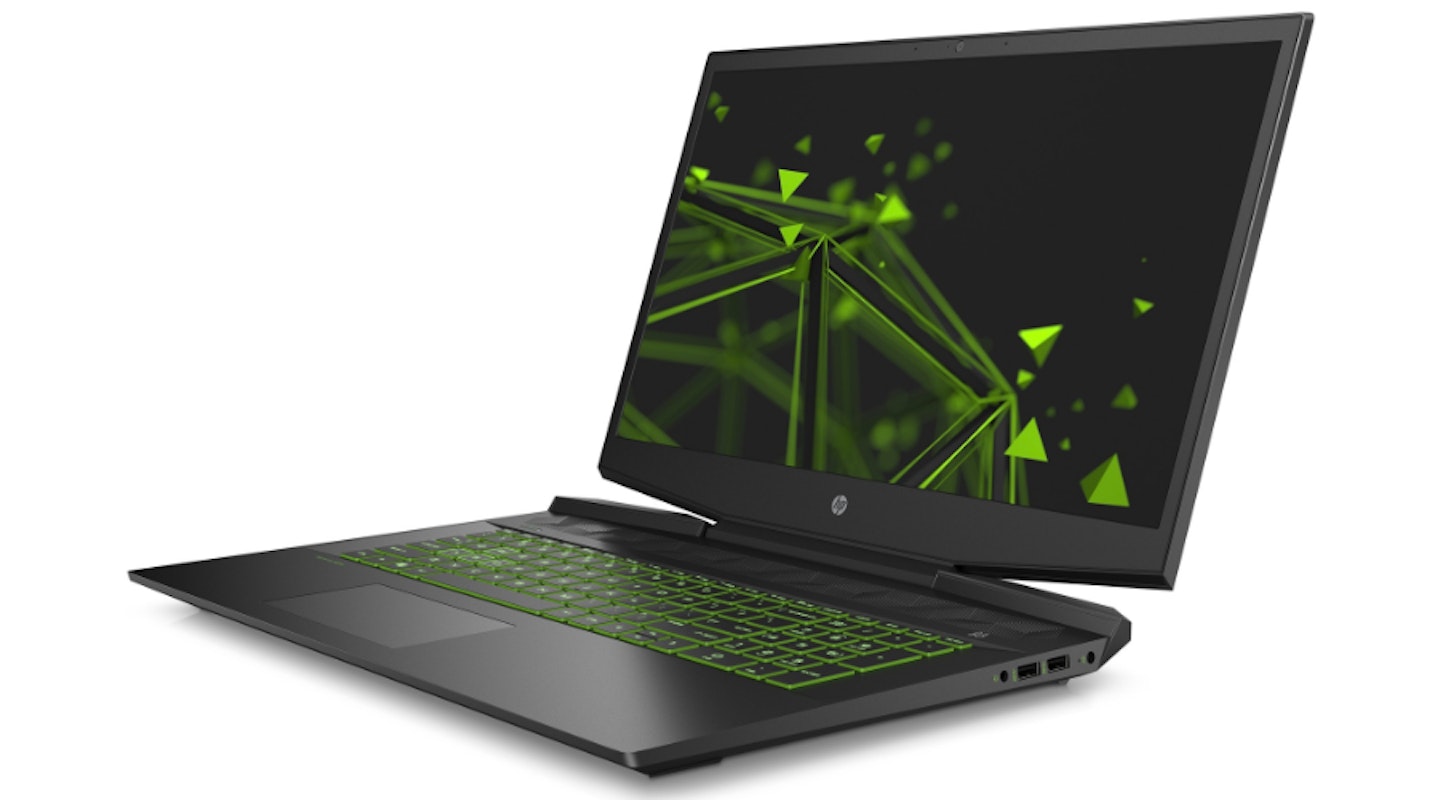
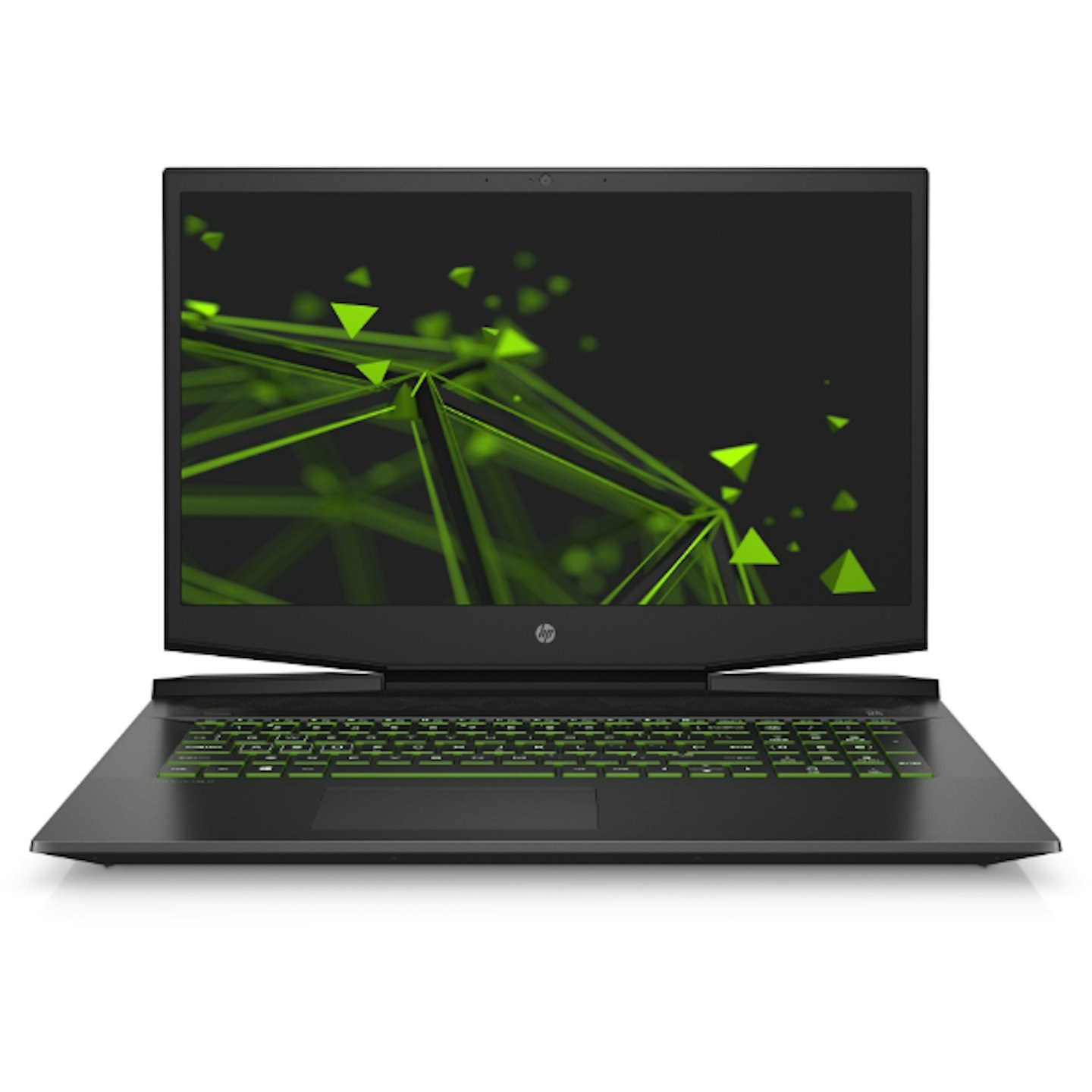
store.hp.com
The 17-cd1014na packs all that a gamer on the move may require for a price that’s more than acceptable. Intel’s 10th gen i7-10750H (2.6GHz/5.0GHz) CPU has plenty of processing power in its six cores. The 16GB DDR4 RAM ticks all the boxes for solo and multiplayer gaming, and the GTX 1660Ti, complete with its 6GB GDDR6, can make the most of the 17.5-inch 1080p/144Hz IPS display.
Unlike many of its competitors, this is a dual-drive laptop with a 512GB NVMe SSD and 1TB HDD. Though it adds a little to the overall weight, it's great news for anyone looking to use the laptop for more than just gaming on one or two titles. The 1TB volume provides ample space for video, music and image files or software packages from the likes of Adobe or Coral.
Pros: Gorgeous display, components have plenty of grunt
Cons: Short battery life, HDD adds weight and superfluous to some gamers
Specifications:
CPU: Intel® Core™ i7-10750H 6 Core (2.6GHz/5.0GHz)
RAM: 16GB dual-channel DDR4-2933MHz (8GB x 2)
GPU: NVIDIA® GeForce GTX 1660 Ti with Max-Q (6GB GDDR6)
SSD: 512GB SSD M.2 NVMe PCIe 3.0 x4
HDD: 1TB 7200RPM SATA
Display: 17.5-inch Full HD IPS 144Hz
Connections: USB-C x1, USB 3.0 x3, WiFi, Bluetooth 5.0, enternet
Video output: HDMI 2.0, DisplayPort 1.4
Audio: Stereo speakers, B&O Audio, 3.5mm audio in/out,
Battery: Up to 5 hours (or 6 hours during video playback)
OS: Windows 10 Home
Weight: 2.75kg
Other: Full-size, acid green backlit, shadow black keyboard with numeric keypad, built-in True Vision 720p webcam
ASUS ROG Zephyrus G14 GA401IU
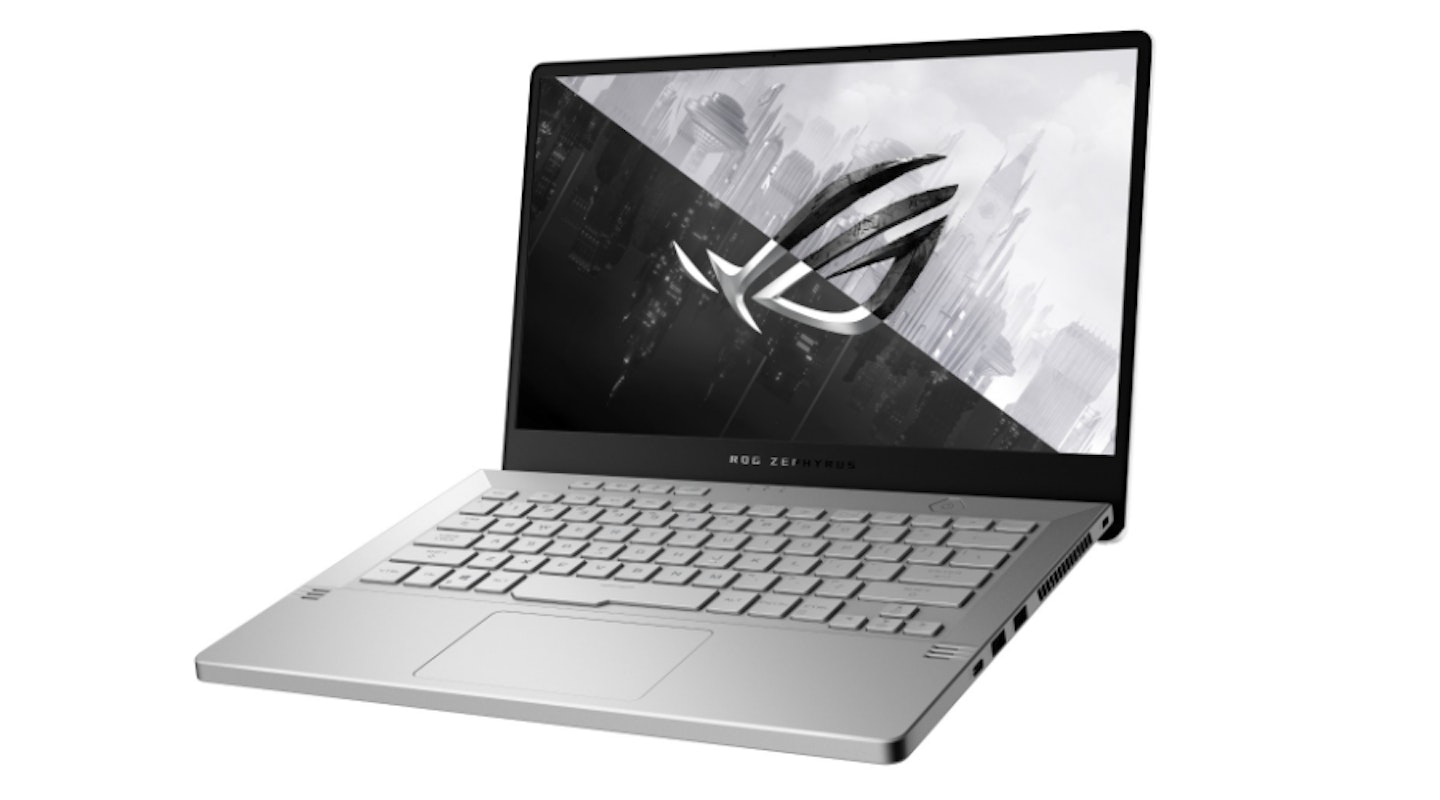

www.johnlewis.com
The ASUS ROG Zephyrus G14 GA401IU is the ultimate in compact high-spec gaming, carrying a 14-inch display and weighing only 1.6kg. The G14 has 16GB DDR4 RAM (8GB of which is onboard) and the AMD Ryzen 7 4800H CPU (2.6GHz/4.2GHz) that’s got plenty of muscle for gaming on the go. Local storage amounts to 512GB via a suitably slim and speedy NVMe SSD. The ‘tiny but mighty’ ethos behind the G14's design carries over to the 14-inch display, with an IPS panel delivering 120Hz and 1080p. A GTX 1660 Ti GPU takes care of the visuals. On top of all this, it's got four speakers - two tweeters and dual down-firing woofers - and Dolby Atmos support for a simulated 5.1.2-channel surround.
Pros: Extremely portable and powerful, Dolby Atmos support
Cons: Pricey for a laptop with a CPU that can’t hit 5.0GHz.
Specifications:
CPU: AMD Ryzen 7 4800H 8 Core CPU (2.9GHz/4.2GHz)
RAM: 16GB dual-channel DDR4 (8GB onboard)
GPU: NVIDIA® GeForce GTX 1660 Ti with Max-Q (6GB GDDR6)
SSD: 512GB SSD M.2 NVMe PCIe 3.0 x4
Display: 14-inch Full HD IPS 120Hz, Pantone validated
Connections: USB-C x3, USB 2.0 x1, WiFi, Bluetooth 5.0, enternet
Video output: HDMI 2.0
Audio: Quad speakers, Dolby Atmos
Battery: Up to 9 hours
OS: Windows 10 Home
Weight: 1.6kg
HDMI, DisplayPort, Resolution and Refresh Rate: A Quick Reference Guide
Port interfaces have a direct effect on the resolution and refresh rate that a monitor can attain. More recent iterations of the HDMI and DisplayPort interfaces can transfer larger volumes of information, allowing for higher refresh rates and resolutions to be achieved.
Linking your gaming laptop, PC, PS5 or Xbox Series X to an external screen via the correct port and with the right cable will ensure peak performance. Here’s a quick guide breaking down the maximum refresh rates and resolutions for HDMI and DisplayPort interfaces:
HDMI 1.4 - 120Hz at 1080p, 75Hz at 1440p, 30Hz at 4K
HDMI 2.0 - 240Hz at 1080p, 144Hz at 1440p, 60Hz at 4K
HDMI 2.0a - The same as 2.0, but with additional support for HDR
HDMI 2.0b - The same 2.0a, but with additional support for HLG
HDMI 2.1 - 120Hz at 4K, 60Hz at 8K UHD
Note: Some manufactures use software to artificially raise the 120Hz at 1080p of HDMI 1.4 to 144Hz.
DP 1.2 - 240Hz at 1080p, 165Hz at 1440p, 75Hz at 4K
DP 1.3 - 240Hz at 1440p, 120Hz at 4K, 60Hz at 5K, 30Hz at 8K
DP 1.4 - 144Hz at 4K, 120Hz at 5K, 60Hz at 8K
Note: Mini DisplayPorts match the performance of their iteration. For example, Mini DP 1.3 and DP 1.3 offer the same capacities.
READ MORE: The Best PC Games
READ MORE: The Best Gaming Headset
READ MORE: The Best Gaming Monitor
READ MORE: The Best TVs For Gaming
READ MORE: The Best Gaming Chair
